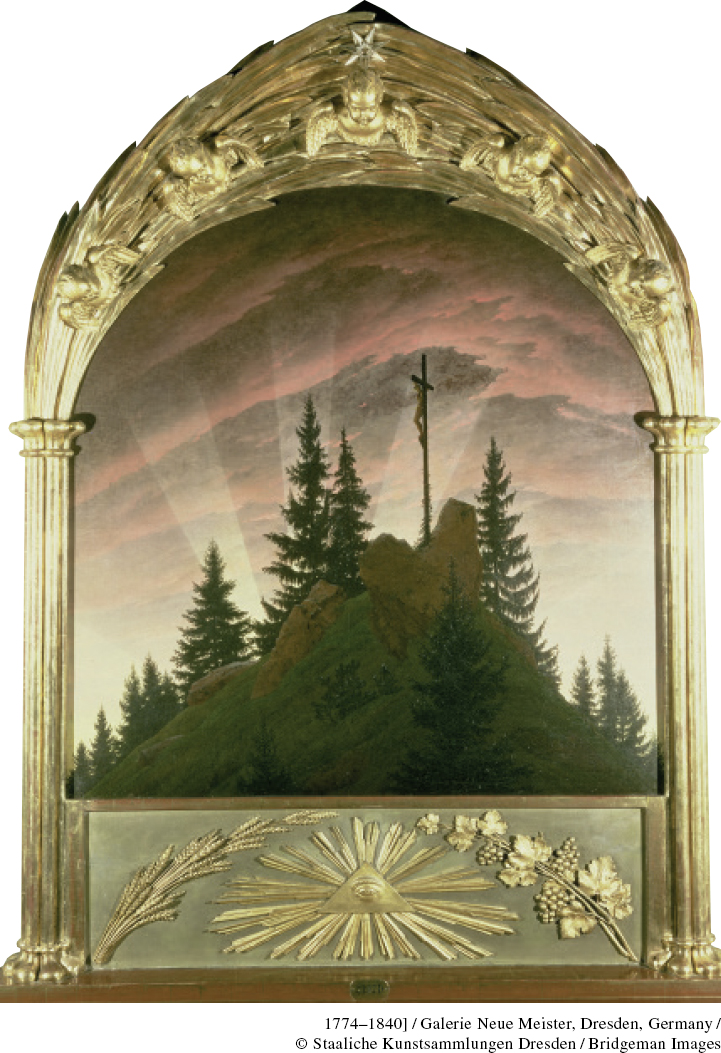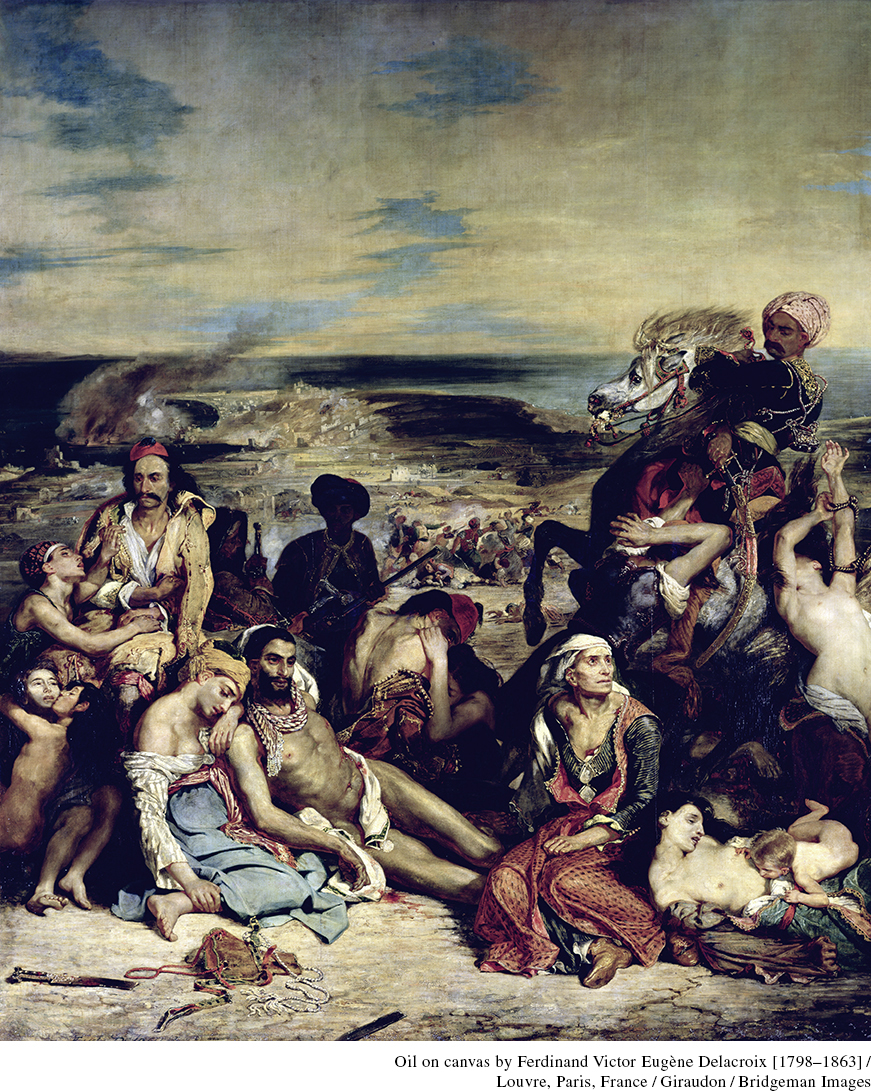Romanticism
Romanticism
As an artistic movement, romanticism encompassed poetry, music, painting, history, and literature. (See “The Limits of Reason: The Roots of Romanticism and Religious Revival” in Chapter 18 on the origins of romanticism.) It glorified nature, emotion, genius, and imagination as antidotes to the Enlightenment and to classicism in the arts, challenging the reliance on reason, symmetry, and cool geometric spaces. Classicism idealized models from Roman history; romanticism turned to folklore and medieval legends. Classicism celebrated orderly, crisp lines; romantics sought out all that was wild, fevered, and disorderly. Romantics might take any political position, but they exerted the most political influence when they expressed nationalist feelings.
Romantic poetry celebrated overwhelming emotion and creative imagination. George Gordon, Lord Byron (1788–1824), explained his aims in writing poetry:
For what is Poesy but to create
From overfeeling, Good and Ill, and aim
At an external life beyond our fate,
And be the new Prometheus of new man.
Prometheus was the mythological figure who brought fire from the Greek gods to human beings. Byron did not seek the new Prometheus among political leaders or military men; he sought him within his own “overfeeling,” his own intense emotions. Byron became a romantic hero himself when he rushed off to act on his emotions by fighting and dying in the Greek war for independence from the Turks.
Romantic poetry elevated the wonders of nature almost to the supernatural. In a poem that became one of the most beloved exemplars of romanticism, “Tintern Abbey” (1798), the English poet William Wordsworth (1770–1850) compared himself to a deer even while making nature seem filled with human emotions. Wordsworth had greeted the French Revolution with joy but had gradually become disenchanted and celebrated British nationalism instead. (See “Document 20.2: Wordsworth’s Poetry.”)
Their emphasis on authentic self-expression at times drew romantics to exotic, mystical, or even reckless experiences. Some romantics depicted the artist as possessed by demons and obsessed with hallucinations. This more nightmarish side was captured, and perhaps criticized, by Mary Shelley in Frankenstein. In his old age, German poet Johann Wolfgang von Goethe (1749–1832) likewise denounced the extremes of romanticism, calling it “everything that is sick.”

Romanticism in painting similarly idealized nature and the individual of deep feelings. The German romantic painter Caspar David Friedrich (1774–1840) depicted scenes—often far away in the mountains—that captured the romantic fascination with the sublime power of nature. His melancholy individual figures looked lost in the vastness of an overpowering nature. Friedrich hated the modern world. His landscapes often had religious meaning as well, as in his controversial painting The Cross in the Mountains (1808), which showed a Christian cross standing alone in a mountain scene. It symbolized the steadfastness of faith but seemed to separate religion from the churches and attach it to mystical experience.
The English painter Joseph M. W. Turner (1775–1851) depicted his vision of nature in mysterious, misty seascapes, anticipating later artists by blurring the outlines of objects. The French painter Eugène Delacroix (1798–1863) chose contemporary as well as medieval scenes of great turbulence to emphasize light and color and break away from what he saw as “the servile copies repeated ad nauseum in academies of art.” Critics denounced his techniques as “painting with a drunken broom.” To broaden his experience of light and color, Delacroix traveled in the 1830s to North Africa and painted many exotic scenes in Morocco and Algeria.

The towering presence of the German composer Ludwig van Beethoven (1770–1827) in early-nineteenth-century music helped establish the direction for musical romanticism. His music, according to one leading German romantic, “sets in motion the lever of fear, of awe, of horror, of suffering, and awakens just that infinite longing which is the essence of Romanticism.” Beethoven transformed the symphony into a connected work with recurring and evolving musical themes. Some of his work was explicitly political; his Ninth Symphony (1824) employed a chorus to sing the German poet Friedrich Schiller’s verses in praise of universal human solidarity. Beethoven had admired Napoleon and even dedicated his Third Symphony, the Eroica (1804), to him, but when he learned of Napoleon’s decision to name himself emperor, the composer tore up the dedication in disgust.
If romantics had any common political thread, it was the support of nationalist aspirations, especially through the search for the historical origins of national identity. Romantic poets and writers collected old legends and folktales that expressed a shared cultural and linguistic heritage stretching back to the Middle Ages. These collections showed that Germany, for example, had always existed even if it did not currently take the form of a single unified state. Italian nationalists took The Betrothed (1825–1827), a novel by Alessandro Manzoni (1785–1873), as a kind of bible. Manzoni, the grandson of the Italian Enlightenment hero Cesare Beccaria, set his novel in the seventeenth century, when Spain controlled Italy’s destiny, but his readers understood that he intended to attack the Austrians who ruled northern Italy in his own day.
Manzoni had been inspired to write his novel by the most influential of all historical novelists, Sir Walter Scott (1771–1832). While working as a lawyer and then judge in Scotland, Scott first collected and published traditional Scottish ballads that he had heard as a child. After achieving immediate success with his own poetry, especially The Lady of the Lake (1810), he switched to historical novels. His novels are almost all renditions of historical events, from Rob Roy (1817), with its account of Scottish resistance to the English in the early eighteenth century, to Ivanhoe (1819), with its tales of medieval England. Readers snatched them up the minute they appeared; the first printing of Rob Roy sold out in two weeks. Very much a man of his time, Scott also published a successful biography of Napoleon only five years after the emperor’s death.